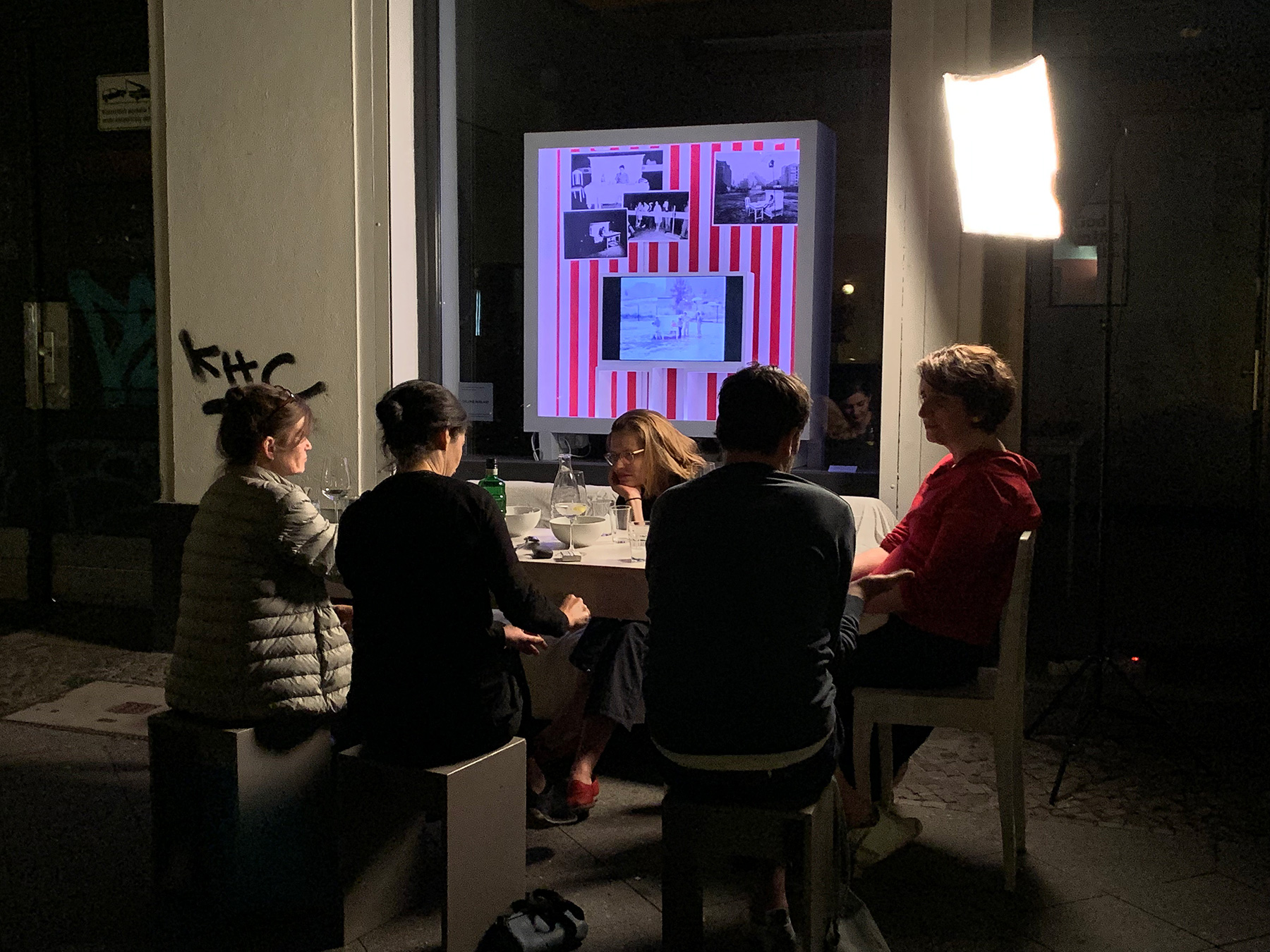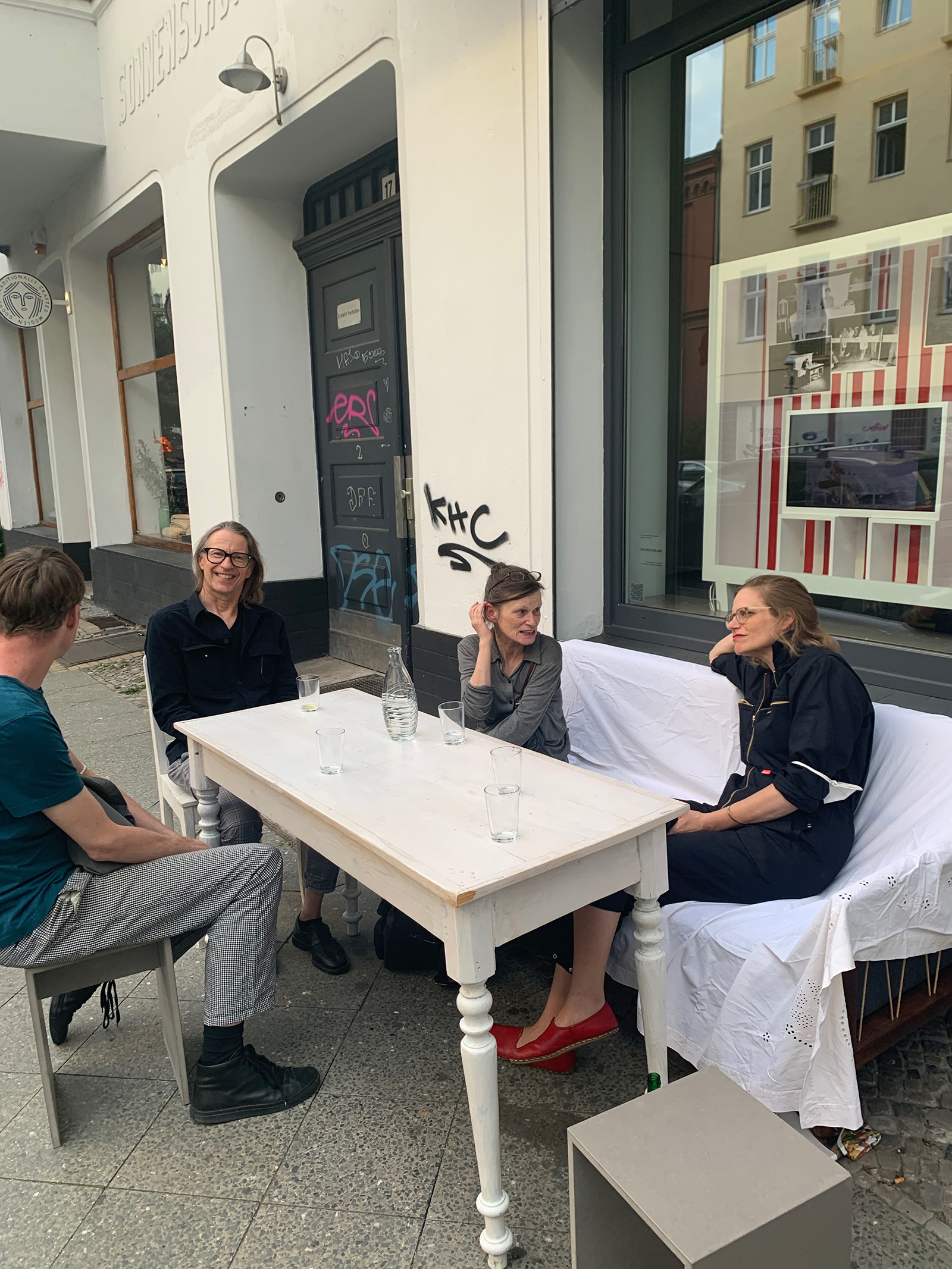- 02 July – 01 August
Public Living / Pausing for Summer
From 02 July – 1 August, Galerie Auslage presents her video “Summer Pause” (1980) as a homage to the artist Anne Jud, as well as the photographic documentation of “Public Living” (1980).
–
After training as an actress in Zurich and Vienna, Anne Jud came to Berlin in 1974, where she began her artistic work in 1976. From 1977 to 1981 she was a member of the Galerie am Moritzplatz. Her performances populated the urban space of West-Berlin in the 1980s.
Until the early 1990s, Jud also worked as a costume designer, for example in theatre productions directed by Peter Stein or Julia Siemers, in films by Elfi Mikesch / Monika Treut, Ulrike Ottinger, Monika Funke Stern or Rosa von Praunheim and in costume assistance with Gisela Storch for Jean Jourdheuil, Werner Herzog, Thomas Brasch or Anthony Page; from 1987-1991 she taught costume design at the Berlin HdK.
Alongside object-like works – above all collages, assemblages, furniture-like objects and a few films – performance formed a focal point of her artistic activity.
Of course, performance is a time-based medium, but for some of her works Jud extended this beyond what is common in the museum or gallery context. Consistently, she worked in public space for this purpose. In 1979, for example, she had herself locked up for 24 hours in SO 36 (“Eine Nacht eingeschlossen im SO 36”). The following year, she had to break off the performance “Public Living” on Naunynstraße, which was also planned for 24 hours, after attacks by neighbouring squatters, but she carried it over into “Summer Pause“ (1980), when she then spent 24 hours on a couch on a wasteland near Potsdamer Platz. Anne Jud was visited and cared for by friends and documented encounters and events during this period; in addition to this intense because continuous exposure and display of her own body (and mind), an aspect of these works was also the interaction with passers-by.
Also one should not disregard the sound in the performances: Whether it is concrete – for example, in the form of a soundtrack, such as that of DIN A Testbild for “Karo” (1981) or that of Gudrun Gut for “‘Ad Acta’ The Four Seasons” (1986, and two works developing from it in 1988), or as a basic component of the performance, such as the shattering mirror plates in “Eiskalt” (1987), the wind chimes in “Säulen-Installation” (Schlosspark Charlottenburg, 1992), or more or less present, such as the sounds of urban space that swell and recede – or abstract, present as a thought, such as in the choice of locations for her performances that take place indoors, such as the concert halls SO36 Berlin or Alter Wartesaal Cologne.
A six-month study visit to the USA and Mexico in 1975/1976 nourished Anne Jud’s fascination with the United States of America. For decades, she used US dollar bills (later also stamps) in her collages and assemblages; she dissected them, used them as framings, sewed them into a jacket for a performance in 1980, tailored suits that she printed serially, used them in the fashion edition “Masterpieces” (1986, with Claudia Skoda), copied them onto transparent foils as in “Foto-Aktion mit Dollar-Klarsicht-Form-Kleid” (1979) or the performance “Der Fechter ist gefangen” (Budapest, 1981) or transformed and exaggerated objects, furniture and everyday objects, which she pasted and printed with dollar bills. In the process, moments of affirmative exaggeration and a critical gaze resonate side by side, complement, overlap and contradict each other.
On a biographical level, it seems only consistent that Anne Jud moved the centre of work and life to Solvang, USA, in the mid-1990s, where she married the surgeon Wolfgang C. Hallauer and opened the Artstudio on the Hallauer Ranch. In 2016 she died unexpectedly of an aneurysm.
Text: Andreas Reihse




